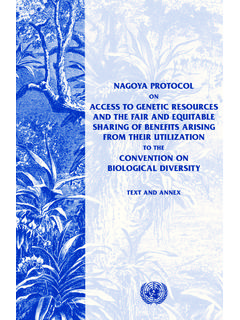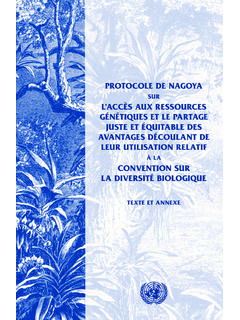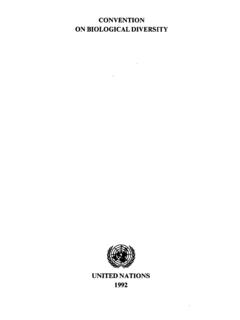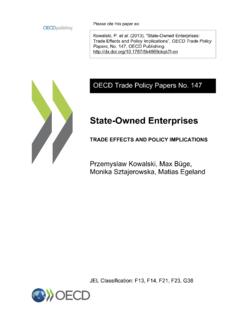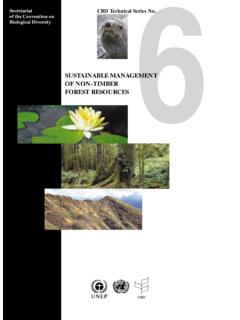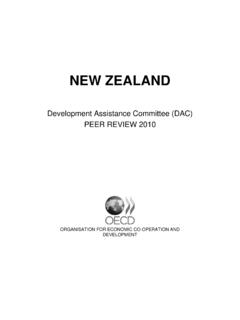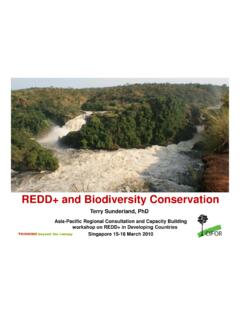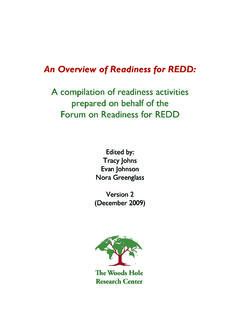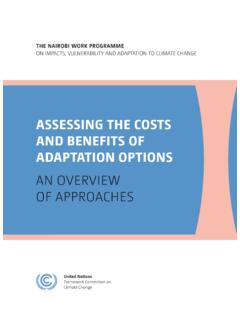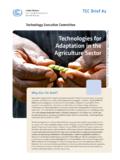Transcription of The Business Case for Sustainability
1 The Business Case for Sustainability 1 The Business Case for Sustainability Whether managing downside risk, creating Business value by incorporating sustainable solutions, or identifying innovative ways to finance Sustainability , the private sector is becoming the engine of competitive solutions to Sustainability and can help finance and address Sustainability challenges in the years ahead. BUSINESSES FACE Sustainability CHALLENGES THE GLOBAL CONTEXT Globally, Sustainability challenges are becoming even more material, reaching thresholds of importance to companies long-term strategies, to their customers, and external stakeholders. From increasing demand for natural resources to economic disparity to climate change, companies are facing a more complex array of trade offs and risks across their value chains. Population growth, a rising middle class, rapid urbanization, and economic growth are all fueling an increasing demand for food, water, energy, land, and other resources.
2 In the last decade, emerging markets saw an 80 percent increase in per capita income, which in turn is resulting in an increase in consumption. By 2030, another three billion middle class consumers are expected to drive up demand even further. Early projections show an 80 percent increase in energy use and 60 percent increase in water climate change matters to Business success. Understanding climate risks and adaptation is critical to supporting clients. The long-term impact of climate change will be felt by many businesses as changes in temperature, rainfall patterns, sea level, and storm conditions require new adaptation strategies. There is also public pressure for companies to decrease their greenhouse gas emissions, which rose by 6 percent in 2010 one of the highest rates in recorded history. Many companies are developing climate change strategies, assessing their internal and supply chain emissions and examining their approach to climate change throughout their operations and value chain.
3 Volatility and uncertainty impact both consumers and private sector. In many countries, the rising price of food has already pushed millions of people into poverty, disproportionately affecting the vulnerable. Moreover, the high price of resources, including food, energy, and water, can fuel civil unrest in emerging markets. Volatility of resource prices causes uncertainty for the private sector, creating risks associated with productivity investments and potentially distorting supply chain efficiency. 1 McKinsey Study 2011. Resource Revolution: Meeting the World s energy, materials, food and water needs. 2 THESE COMPLEX CHALLENGES CAN CREATE VALUE FOR Business Sustainability has become an important factor in Business strategies. Large multinationals and mid-sized companies are increasingly taking a long-term view toward managing environmental and social risks.
4 Many companies recognize that by addressing environmental and social issues they can achieve better growth and cost savings, improve their brand and reputation, strengthen stakeholder relations, and boost their bottom line. Strategic integration of Sustainability prepares companies to better anticipate and understand long-term trends and the effect of resource use, and to address stakeholder expectations. According to a 2011 McKinsey Survey, 76 percent of CEOs consider that strong Sustainability performance contributes positively to their businesses in the long Companies are capitalizing on local conditions and shaping their Business strategies to accommodate constraints on natural resources in a way that allows them to develop innovative new products, services, and Business models.
5 This also provides opportunities to bolster their growth, profitability, and add societal value. 2 McKinsey Global Survey results 2011. The Business of Sustainability . The Business case for Sustainability is also connected to improved reputation and brand value. The global survey of senior executives from around the world conducted by the Economist in 2011 found that 76 percent of respondents think that embedding Sustainability into the company s Business leads to enhanced reputation and increased brand value. The more a company proves to stakeholders that its Business is driven by strong Sustainability policies, the lower the risks associated with that company. In contrast, weak environmental, social, and governance (ESG) performance can negatively impact a firm s reputation, which in many cases can be costly.
6 British Petroleum (BP) is a good example of how a company s brand value can be affected by poor Sustainability policies. CREATING INNOVATIVE SOLUTIONS Jain Irrigation is an example of a company that created innovative social solutions and feeds those innovations back into communities. The IFC client, based in Jalgaon, India, pioneered a system of contract farming in which the company buys farmers crops at a guaranteed price, thereby enabling farmers to plan and obtain loans for irrigation products, such as an affordable drip irrigation system that reduces water consumption. Jain Irrigation has worked closely with its rural customers to promote precision farming, which increases output by optimizing the balance between fertilizers, pesticides, water, and energy. This approach has given Jain Irrigation a competitive edge: its close relationship with smallholder farmers and the fact that its products are customized to local conditions make it easier to win Business from large agricultural suppliers.
7 PROTECTING BRAND VALUE Due to the Gulf of Mexico oil spill, BP has lost more than $32 million a day in brand value. BP s market value has dropped from $184 billion to $ billion, roughly 48 percent in a period of two months. Developing a good environmental and social reputation can contribute to a willingness among customers and investors to pay a price premium, which directly affects the company s bottom line. 3 Investment in resource efficiency is important for small and large companies. It helps them strengthen their competitive advantage. Studies have shown that improvements in resource efficiency in energy and water have lead to significant cost savings and lower environmental impact. DuPont, for example, has cut costs by $2 billion in the last 10 years by investing in energy efficiency equipments while reducing greenhouse gas emissions by 75 percent.
8 Another good example in reducing operational costs and environmental impact is the IFC client Kuybyhev Azot in Russia. Companies are working with suppliers to become more resource efficient and environmentally sustainable. For example, Wal-Mart is aiming to save $ billion from reducing supplier packaging by 5 percent by 2013. There is a correlation between good environmental and social performance and financial performance. According to a Harvard Business School study that tracked performance over the last 18 years, companies with strong ESG performance outperformed companies with weak ESG performance, as measured in accounting The 3 Eccles , Ioannou I. Serafeim G. The Impact of a Corporate Culture of Sustainability on Corporate Behavior and Performance, Harvard Business School, November, 2011.
9 USING ENERGY EFFICIENCY TO DECREASE COSTS Kuybyhev Azot (KuAz) is a top chemical and fertilizer producer in Russia. IFC supported KuAz with a $20 million loan to finance a program to identify ways to use energy efficiency and cleaner production as routes to reduce costs, increase competitiveness, and improve environmental performance. Once completed, these measures will save the company about $9 million in energy costs a year. The resulting reduction in carbon emissions of over 115,000 tonnes of CO2 per year is estimated to be equal to taking 23,000 cars off the road. FINANCIAL PERFORMANCE OF COMPANIES WITH WEAK VS. STRONG ESG PERFORMANCE Source: Eccles , Ioannou I. Serafeim G. The Impact of a Corporate Culture of Sustainability on Corporate Behavior and Performance, Harvard Business School, November, 2011.
10 ESG PerformanceStrong ESG Performancestudy found that performance was stronger in sectors that were significant users of natural resources, where brand and human capital were particularly important and where the companies competed on a Business -to-consumer basis. 4 CUSTOMERS AND INVESTORS VALUE STRONG ESG PERFORMANCE The growing demand by consumers and investors for sustainable products and services, coupled with increased scrutiny and reporting on corporate responsibility, are driving companies to pay greater attention to their ESG performance. According to McKinsey s global survey of 7,751 consumers, 87 percent are concerned about the environmental and social impacts of the products they buy and 54 percent are willing to pay a premium for products that are sustainably manufactured. Increasingly, investors are considering environmental and social issues when selecting investments.

